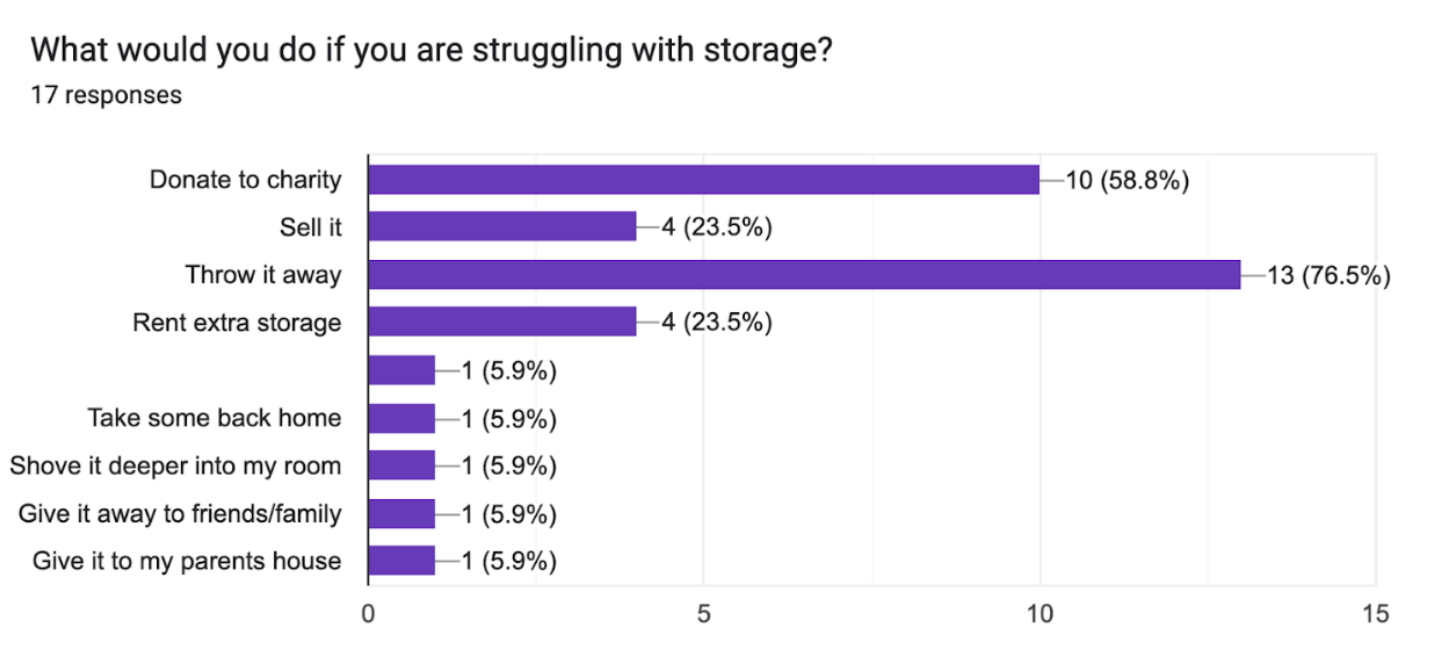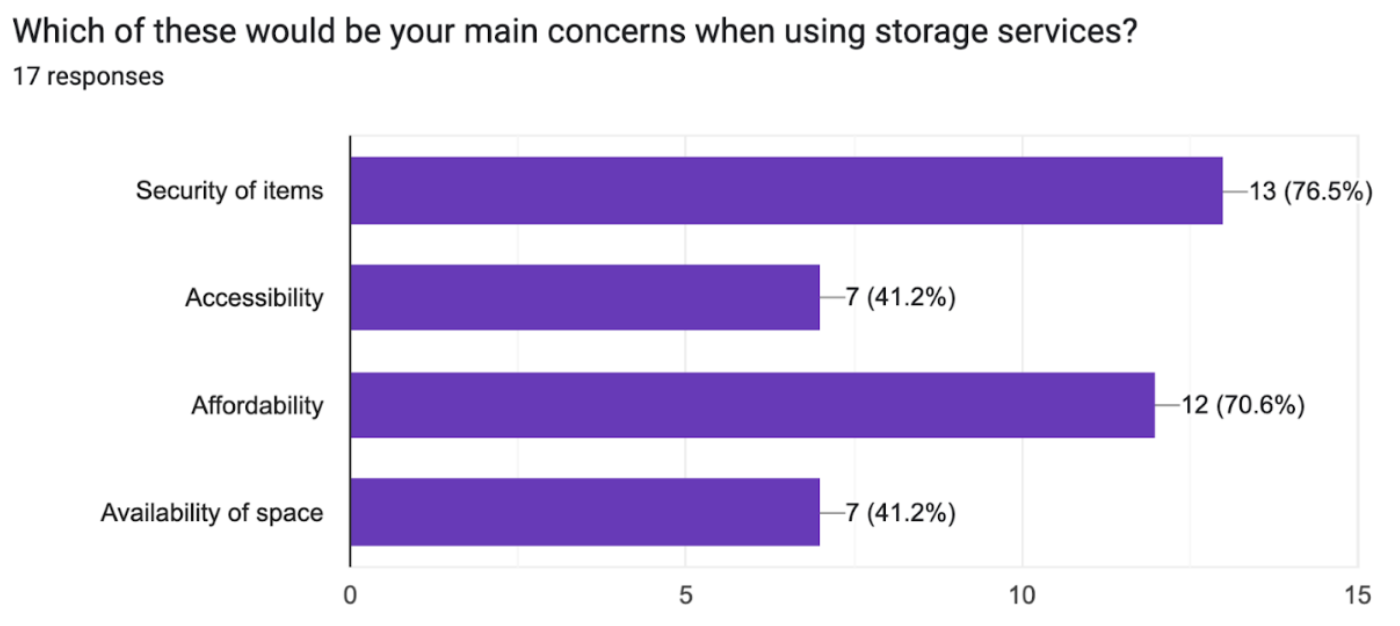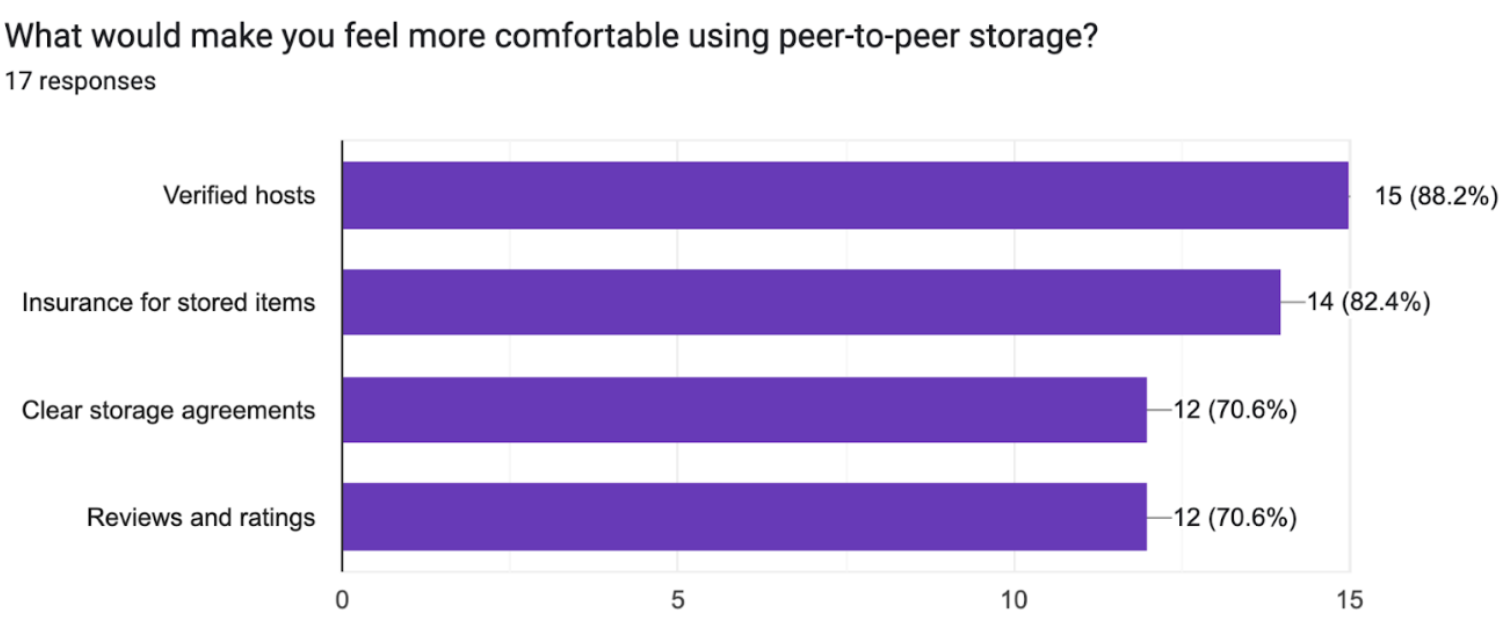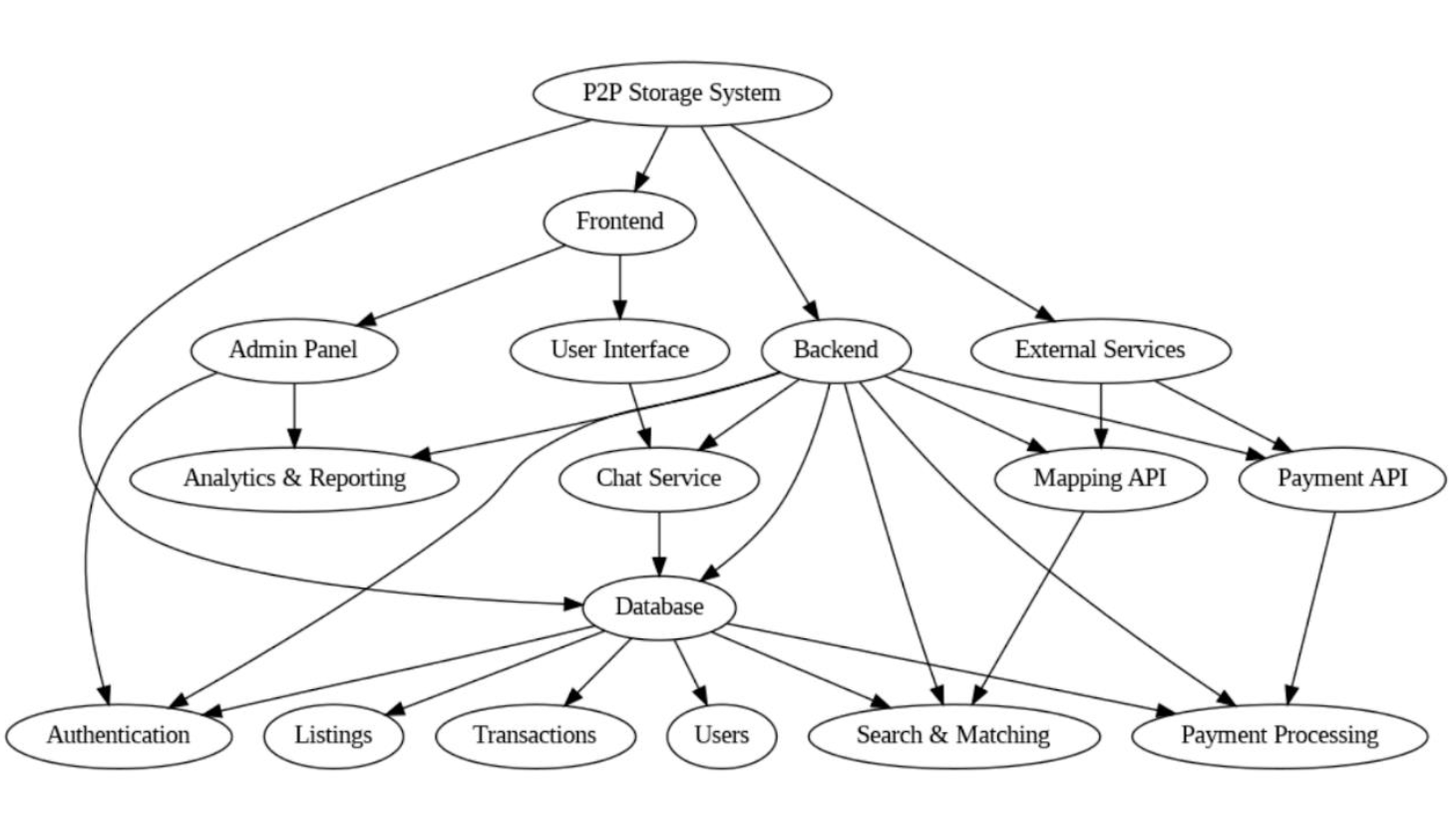StorMate
A Peer-To-Peer Storage Solution
As part of a university group project, we developed StorMate, a peer-to-peer storage platform designed to provide students with affordable storage solutions while enabling local residents and businesses to monetise unused space. Using an agile development process, we iteratively built and integrated frontend and backend components with technologies such as React, Flask, and SQL. The system was tested through unit, integration, and user-focused evaluations, with effectiveness measured by task completion time, booking success rate, and user satisfaction.
The Project Proposal
Our project proposal focused on designing StorMate, a peer-to-peer storage platform aimed at providing affordable and accessible storage options for students while allowing individuals with unused space to generate value. Survey data highlighted the problem clearly: when struggling with storage, most students resorted to throwing items away (76.5%) or donating them, underscoring the need for cost-effective alternatives. The figures also revealed key concerns such as security (76.5%) and affordability (70.6%), while showing that features like verified hosts (88.2%) and insurance for stored items (82.4%) would build trust in such a service. This research directly informed our design goals, ensuring that user priorities shaped the platform’s features, and laid the groundwork for an agile development and evaluation process.
Requirements and Design
The system architecture for our peer-to-peer storage platform was designed to ensure usability, security, and scalability. It consists of a frontend renter and host portal, a backend with services for authentication, booking, payments, and communication, and a relational database managing users, listings, and transactions. External APIs such as Maps for location search and Payments for secure processing were integrated to enhance functionality. These diagrams highlight how the system’s components interact to deliver core features like bookings, reviews, and notifications while maintaining reliability and scalability in line with real-world web applications.
Emperical Evaluation
A key part of our evaluation involved formal hypothesis testing to assess the usability and performance of both the renter and host dashboards. Using one-tailed t-tests and binomial z-tests, we compared task completion rates and outcomes against expected benchmarks. As shown in the results, none of the null hypotheses were rejected due to high p-values, meaning no statistically significant differences were found. While the tests did not provide strong statistical validation, they were an important part of our evaluation cycle, ensuring that tasks were rigorously measured and highlighting areas where further refinement and larger-scale testing would improve system reliability and usability.






